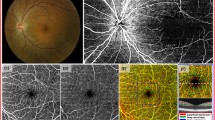Abstract
Vascular malformations commonly occur in the facial region, and can be associated with significant stigma and embarrassment. Studies have shown that even recommended light-based treatments do not always result in complete clearance. This indicates the need for more accurate pre-treatment assessment of vessel morphology to optimize treatment settings and identify possible morphological predictors of the outcome. Fourteen patients (six males, eight females, and aged 37–66 years) with the diagnosis of telangiectasias were enrolled and were all scanned with OCT and digitally photographed before and minutes after IPL treatment. OCT images of the telangiectasias before treatment were displayed as hyporeflective/signal poor bands clearly demarcated from the surrounding tissue. Minutes after treatment, OCT images demonstrated two different reactions. (1) Narrow hyperreflective bands surrounding the vessels, which may indicate edema or insufficient coagulation. (2) Hyperreflective signals within the lumen of the vessels, compatible with the expected irreversible microthrombus formation in the vessels. OCT imaging is capable of real-time assessment of tissue damage during light and laser treatment, including visualization of the perivascular changes. This may offer a more dynamic, more complete understanding of the efficacy and potential outcome of the treatment process. It is hypothesized that these immediate changes may correlate to longer-term treatment outcome.




Similar content being viewed by others
References
Barsky SH, Rosen S, Geer DE et al (1980) The nature and evolution of port wine stains: a computer-assisted study. J Invest Dermatol 74(3):154–157
Bazant-Hegemark F, Meglinski I, Kandamany N et al (2008) Optical coherence tomography: a potential tool for unsupervised prediction of treatment response for port-wine stains. Photodiagnosis Photodyn Ther 5:191–197
Hare McCoppin HH, Goldberg DJ (2010) Laser treatment of facial telangiectases: an update. Dermatol Surg 36(8):1221–1230
Izikson L, Nelson JS, Anderson RR (2009) Treatment of hypertrophic and resistant port wine stains with a 755 nm laser: a case series of 20 patients. Lasers Surg Med 41:427–432
Koster PH, Bossuyt PM, van der Horst CM et al (1998) Assessment of clinical outcome after flashlamp pumped pulsed dye laser treatment of portwine stains: a comprehensive questionnaire. Plast Reconstr Surg 102:42–48
McCoy SE (1997) Copper bromide laser treatment of facial telangiectasia: results of patients treated over five years. Lasers Surg Med 21(4):329–340
Mogensen M, Morsy HA, Thrane L et al (2008) Morphology and epidermal thickness of normal skin imaged by optical coherence tomography. Dermatology 217:14–20
Nelson JS, Kelly KM, Zhao Y et al (2001) Imaging blood flow in human port-wine stain in situ and in real time using optical Doppler tomography. Arch Dermatol 2001(137):741–744
Phung TL, Oble DA, Jia W et al (2008) Can the wound healing response of human skin be modulated after laser treatment and the effects of exposure extended? Implications on the combined use of the pulsed dye laser and a topical angiogenesis inhibitor for treatment of port wine stain birthmarks. Lasers Surg Med 40:1–5
Welzel J, Bruhns M, Wolff HH (2003) Optical coherence tomography in contact dermatitis and psoriasis. Arch Dermatol Res 295(2):50–55
Zhao S, Gu Y, Xue P et al (2010) Imaging port wine stains by fiber optical coherence tomography. J Biomed Opt 15:036020
Author information
Authors and Affiliations
Corresponding author
Rights and permissions
About this article
Cite this article
Ring, H.C., Mogensen, M., Banzhaf, C. et al. Optical coherence tomography imaging of telangiectasias during intense pulsed light treatment: a potential tool for rapid outcome assessment. Arch Dermatol Res 305, 299–303 (2013). https://doi.org/10.1007/s00403-013-1331-z
Received:
Revised:
Accepted:
Published:
Issue Date:
DOI: https://doi.org/10.1007/s00403-013-1331-z




